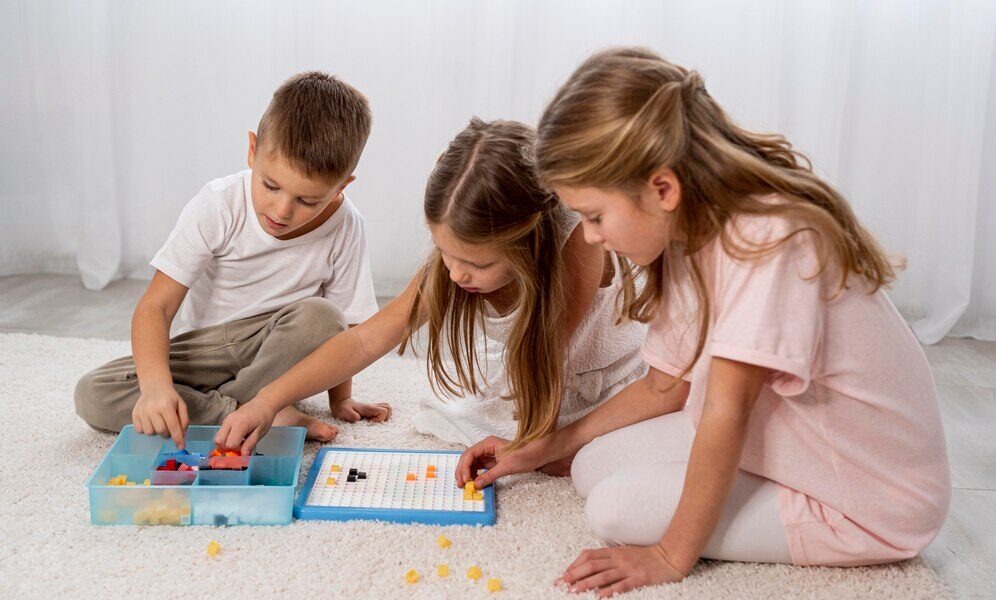Let’s be real—screens aren’t going anywhere. Tablets, phones, and computers are part of daily life for kids, whether it’s for school, entertainment, or communication. But not all screen time has to be passive or mindless. With the right mix of content, screen time can actually support learning, creativity, and critical thinking—and yes, still be fun.
According to Common Sense Media, kids ages 8–12 spend an average of 5 hours and 33 minutes on screens daily, not counting schoolwork. But only a fraction of that time is spent on educational content. That gap offers an opportunity for parents to introduce screen time options that engage and teach—without the eye rolls.
Here’s a breakdown of screen time ideas that your kids will actually enjoy—and you’ll feel good about.
Turn Gaming into Learning
Educational games get a bad rap, but many are anything but boring. Today’s learning games are interactive, visually appealing, and full of clever mechanics that make kids want to keep playing. Bonus: they often build real skills while doing it.
Great categories to explore:
- Math puzzles and logic games (like Prodigy or Math Tango)
- Language and vocabulary games (like Duolingo or Wordscapes)
- Science-based simulation games (like Toca Lab or Crazy Gears)
- Geography and world-building apps (like Stack the States or Tinybop)
Look for games that reward progress, adapt to your child’s level, and encourage creative thinking rather than just repetition.
Use Videos for Curiosity and Exploration
YouTube doesn’t have to be a mindless scroll. Curated channels can spark curiosity and bring complex concepts to life through animation, humor, and storytelling.
Educational YouTube channels kids actually like:
- SciShow Kids – science explained in bite-sized, kid-friendly videos
- CrashCourse Kids – quick lessons on everything from ecosystems to engineering
- National Geographic Kids – real-life animal footage and nature facts
- Art for Kids Hub – step-by-step drawing and art tutorials
- Cosmic Kids Yoga – combines movement with storytelling and mindfulness
Set screen time boundaries by creating playlists or subscribing to specific channels, so your kids stay in the learning lane.
Add a Physical Twist to Screen Time
If your child is bouncing off the walls, try apps and videos that get them moving. These combine screen engagement with physical activity, making them great for breaking up long indoor stretches.
Ideas to combine tech and movement:
- Interactive dance games like Just Dance Now
- Fitness apps like GoNoodle or Sworkit Kids
- Yoga or martial arts videos for beginners
- Augmented reality scavenger hunts or walking games
A few minutes of physical screen time can re-energize kids and help them focus better on calmer activities afterward.
Build Skills with Typing Games
Typing might not sound thrilling, but when it’s gamified, kids actually enjoy improving their skills. And the ability to type fast and accurately is a major confidence-booster when it comes to school projects or future tech-based work.
Try typing games like TypeRoyale, which turn skill-building into competitive fun. Kids can race others by typing passages quickly and accurately, building both speed and focus. It’s the perfect mix of productive and playful.
Introduce Safe Coding and Design Tools
Tech isn’t just about consuming—it’s about creating. When kids use screens to build, code, and design, they’re developing real-world skills like logic, sequencing, and digital storytelling.
Beginner-friendly platforms for creators:
- Scratch – a visual coding language where kids can build games and animations
- Tynker – interactive coding courses for kids aged 5 and up
- Minecraft Education Edition – teaches problem-solving, collaboration, and even history or chemistry
- Canva for Education – lets kids create digital posters, slides, and more with easy design tools
These platforms are fun, but also sneakily educational—they teach structure, planning, and revision without feeling like “work.”
Make Screen Time a Family Activity
Screen time doesn’t always have to be solo. Watching, playing, or learning together creates opportunities for bonding, discussions, and even a few laughs.
Family-friendly screen time ideas:
- Watch a nature documentary and talk about your favorite parts
- Play a co-op puzzle or strategy game together
- Try a trivia app or game-show-style quiz as a team
- Explore a virtual museum tour or cultural experience online
- Take turns using an art or animation app and compare creations
When you join your child in screen time, you also stay more aware of the content they’re interacting with—and they get to share the fun.
Final Thoughts
Not all screen time is created equal. With a little curation, you can guide your kids toward digital experiences that educate, inspire, and entertain all at once. Whether it’s through typing games, interactive videos, or coding tools, these choices offer a better balance between learning and fun.
The goal isn’t to eliminate screens—it’s to make them work for your child’s development. A little creativity (and the right links) can turn screen time into something you both feel good about.



